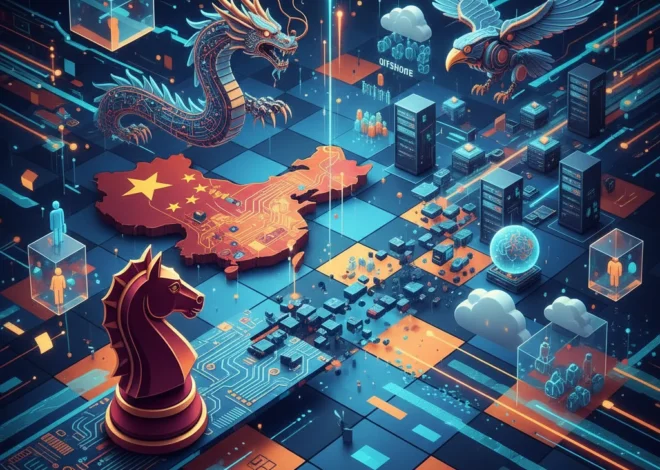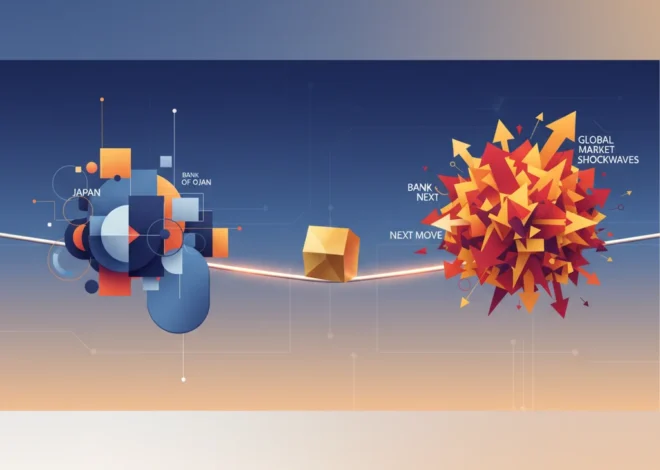
The AI Chip Wars: Is Google Poised to Topple Nvidia’s Trillion-Dollar Throne?
The Unassailable King and the Silent Challenger
In the world of finance and investing, few stories have been as electrifying as Nvidia’s meteoric rise. Propelled by an insatiable demand for its powerful graphics processing units (GPUs) that form the backbone of the artificial intelligence revolution, the company has shattered stock market records, becoming a titan of the modern economy. For many investors, Nvidia isn’t just a company; it’s the undisputed king of AI, a pure-play bet on a future powered by intelligent machines. But in the fast-paced world of financial technology and innovation, no throne is ever truly secure.
Quietly, another giant has been forging its own weapons for this technological war. Google, or more accurately its parent company Alphabet, has been developing bespoke AI chips for over a decade. While Nvidia was selling the shovels for the AI gold rush to everyone, Google was building its own highly-specialized, hyper-efficient mining equipment for internal use. Now, as the AI race intensifies, Google is beginning to offer its secret weapon—the Tensor Processing Unit (TPU)—to the public through its cloud platform. This move signals a new, critical phase in the battle for AI supremacy, with profound implications for the stock market, the future of banking, and the entire global economy.
This isn’t just a tech rivalry; it’s a fundamental clash of business models and a high-stakes drama that investors and business leaders cannot afford to ignore. Is Nvidia’s dominance as impenetrable as it seems, or is Google’s long game about to disrupt the entire AI hardware landscape?
Nvidia’s Fortress: Built on Silicon and Software
To understand the scale of the challenge Google faces, one must first appreciate the fortress Nvidia has built. The company’s GPUs, like the H100, have become the industry standard for training and running large AI models. This dominance isn’t just about superior hardware; it’s about a deeply entrenched software ecosystem. Nvidia’s CUDA (Compute Unified Device Architecture) is a proprietary software platform that allows developers to unlock the massive parallel processing power of its GPUs. For over 15 years, an entire generation of AI researchers and developers has been trained on CUDA. This creates an incredibly powerful “moat”—switching from Nvidia isn’t as simple as buying a different chip; it often means rewriting years of code and retraining entire teams.
This strategic advantage has translated into staggering financial success. As the FT transcript highlights, Nvidia’s control over the AI chip market has been near-total, with some estimates putting its market share at over 80% (source). This dominance has made it a darling of the stock market, but it has also created a significant bottleneck and concentration of risk in the AI supply chain, a fact that has not gone unnoticed by its largest customers.
Navigating the Tariff Tightrope: A CEO's Dilemma and What It Teaches Every Investor
Google’s Secret Weapon: The Rise of the TPU
While Nvidia was conquering the open market, Google was playing a different game. Faced with the colossal computational costs of its own AI ambitions—from Search to Photos to its large language models like Gemini—Google began designing its own custom chips, the TPUs. These chips are Application-Specific Integrated Circuits (ASICs), meaning they are tailor-made for one specific job: running AI machine learning models, particularly using Google’s own TensorFlow software framework.
The advantage of this vertical integration is immense. By controlling the entire stack, from the silicon chip to the software framework to the cloud service it runs on, Google can achieve levels of performance and cost-efficiency that are difficult to match with off-the-shelf components. As mentioned in the FT’s discussion, Google has been using these custom chips to power its most demanding products for years, effectively subsidizing its massive AI infrastructure in-house. Now, by offering its latest generation of TPUs to Google Cloud customers, it’s turning this internal advantage into a competitive weapon in the multi-trillion-dollar cloud computing market.
The strategy is clear: attract AI companies and developers to the Google Cloud ecosystem by offering a potent combination of performance and potentially lower costs than an Nvidia-based alternative. This directly challenges not only Nvidia’s hardware sales but also the cloud leadership of Amazon’s AWS and Microsoft’s Azure, who are themselves major purchasers of Nvidia’s chips.
A Tale of Two Titans: An Investor’s Perspective
For those involved in finance and investing, understanding the differing profiles of these two giants is crucial for navigating the evolving stock market. While both are “AI plays,” they represent vastly different investment theses. Nvidia is a high-growth, pure-play on the proliferation of AI hardware. Google (Alphabet) is a diversified behemoth where AI hardware is a strategic enabler for its core businesses and a growth driver for its cloud segment.
To clarify this distinction, let’s compare the two companies across several key metrics:
| Metric | Nvidia (NVDA) | Alphabet (GOOGL) |
|---|---|---|
| Core Business | High-performance GPUs for AI, gaming, and professional visualization. | Digital advertising (Search, YouTube), Cloud Computing, and other ventures. |
| AI Chip Strategy | Horizontal: Sell GPUs (and software) to the entire market. | Vertical: Develop custom TPUs primarily for its own services and cloud platform. |
| Primary Moat | CUDA software ecosystem and brand dominance in AI hardware. | Dominance in Search, massive data sets, and a deeply integrated tech ecosystem. |
| Stock Market Narrative | High-growth, high-valuation bet on the continuation of the AI hardware boom. | Value and growth; a more diversified, stable play with multiple levers for expansion. |
| Key Risk | Competition from in-house chips (Google, Amazon, etc.) and potential market saturation. | Regulatory pressure, competition in advertising, and challenges in monetizing AI innovations. |
The economics of this competition are fascinating. Every TPU that a Google Cloud client uses instead of a GPU-powered instance is a direct loss of a potential sale for Nvidia. As the FT’s analysis suggests, Google doesn’t need to sell TPUs to the world; it just needs to make them compelling enough to drive growth for its own lucrative cloud business. This dynamic introduces a new variable into Nvidia’s growth projections and could impact its stock market valuation over the long term.
The Ripple Effect: From Cloud Wars to Financial Technology
This battle at the summit of the tech world will create significant ripples across the entire economy, particularly within the fintech and banking sectors. The intense competition between Google, Nvidia, and other players building AI chips is fundamentally a race to lower the cost and increase the accessibility of artificial intelligence.
For the financial technology industry, this is a game-changer. Consider the applications:
- Algorithmic Trading: More powerful and cost-effective chips will allow for the development of more sophisticated trading models that can analyze market data with greater speed and accuracy.
- Fraud Detection: Banks and fintech companies can run more complex AI algorithms in real-time to identify and prevent fraudulent transactions, saving billions of dollars annually.
- Risk Management: Financial institutions can perform more robust economic simulations and stress tests, improving the stability of the entire banking system.
- Personalized Finance: Cheaper AI compute power enables hyper-personalized financial advice and product recommendations, moving beyond simple robo-advisors to truly dynamic, AI-driven financial planning.
Even disruptive technologies like blockchain, which rely on significant computational power for certain operations, stand to benefit from the general advancements in hardware efficiency. The core takeaway is that as the cost of a “unit of intelligence” drops due to this competition, the pace of innovation in every data-intensive industry, especially finance, will accelerate dramatically.
The AI Paradox: How Technology Can Restore the Human Touch to Recruitment and Drive Economic Growth
The Next Chapter in the AI Revolution
The narrative of Nvidia as the sole, unassailable provider of AI’s foundational hardware is being challenged. Google’s patient, decade-long investment in custom silicon is now emerging as a credible and potent strategic threat. While it’s unlikely to dethrone Nvidia in the broader market overnight, it doesn’t have to. By leveraging its TPUs to win market share in the cloud, Google can both bolster its own bottom line and apply significant competitive pressure on Nvidia.
For investors, this signals a maturation of the AI market. The initial gold rush phase, characterized by a single dominant supplier, is evolving into a more complex, multi-polar landscape. This requires a more nuanced approach to investing, looking beyond the hype and analyzing the long-term strategic positioning of each player. The war for AI supremacy is far from over; in fact, with Google’s public entry into the fray, the most interesting battle may have just begun.


